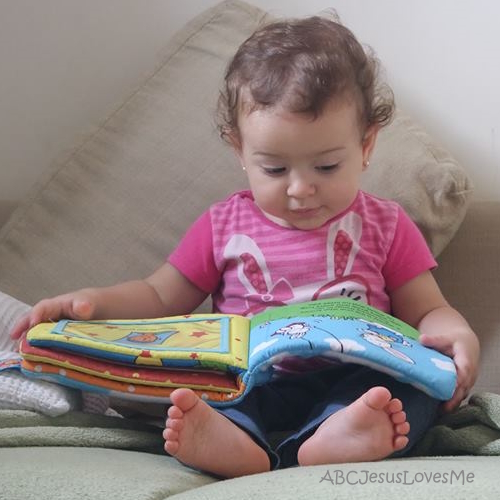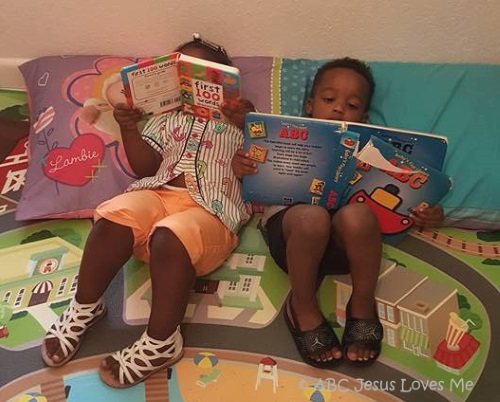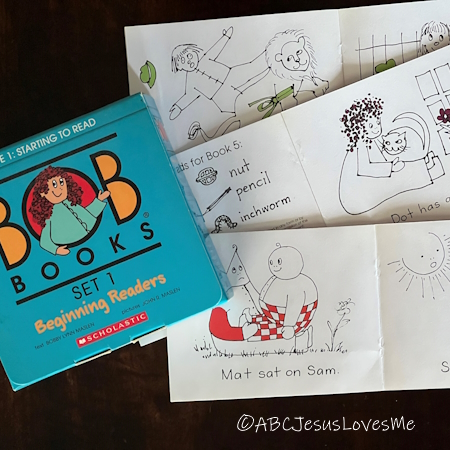
Want to nurture a love of reading in your preschooler while also teaching important skills? The best way to grow a reader is to read quality books regularly, then maximize learning during reading time. This page combines practical tips for fostering a love of books with strategies for teaching through reading aloud. These articles and video idea will help you raise a reader and build essential skills at the same time.
The research is unanimous - children should be read to and read to often. But (sadly) not all books are created equal. Quality books build imagination, a love for reading, curiosity, vocabulary, and pragmatics. The rest...well...don't do these things.
Because I know the frustration of wading through a sea of books to find the best, I have once again done the work for you by creating age-appropriate lists of the best-of-the-best, must-read books for your children, students, and grandchildren.

During these early years, it’s important to introduce a child to a variety of quality books. Keep a basket of books available for reading before naps and bedtime. Over time, you’ll notice the child bringing books to you throughout the day. Reading the same book repeatedly helps expand vocabulary and encourages the child to "read" by studying the illustrations. Let the child turn the pages of board books, as this supports fine motor skill development. Ask the child to point out specific items in the pictures and identify rhyming words. This is also a great time to start building a library, which the child will enjoy exploring on their own later.

Preschool-aged children are starting to understand that words are made of letters, and each letter has its own sound. Phonics refers to the sounds letters make and how they work together. During these years, it's also important to help children recognize that groups of letters form words, with spaces between them. This is known as 1:1 Correlation.
In addition to phonics, focus on developing pragmatics (understanding emotions) and comprehension. Teach children to observe the character's eyes, eyebrows, and mouth to figure out how they are feeling, and also pay attention to body language in the illustrations. Before turning the page, ask the child what they think will happen next and why. After reading, summarize the story's beginning, middle, and end.
The local library is a fantastic resource for expanding a child’s collection of books. Be sure to check out the library's Read Aloud sessions for different age groups, as well as any programs available for preschoolers.

Around ages 5-6, if a child has been frequently read quality books, has a strong phonics foundation, and is developmentally ready, they should transition smoothly into reading.
Once a child can blend basic consonant-vowel-consonant (CVC) words, they are ready to start reading. A phonics flip book was incredibly helpful for my kiddos. I have used two curricula to teach our children to read. Read my thoughts on each here.
BOOKS FOR 5 YEARS Early Elementary Books Late ELEMENTARY Books
Watch a child confidently learn numbers through engaging, hands-on activities in the ABCJesusLovesMe Preschool Curriculum. With a focus on both academics and biblical values, this program nurtures development in every area, all while making learning fun. Click to discover how we can support a child's educational journey!
It is crucial that reading time be fun and filled with love. We want to ensure that reading is never a negative experience. A child will also pick up on your attitude toward reading—if they see you enjoying it, they’re more likely to enjoy it too.
Most experts agree that children should be read to for at least 15 minutes a day. However, there’s much more to reading than just reading the words. Review the following articles and videos to make sure you're getting the most out of reading time.
Discover eight easy and effective ideas to nurture a love for books in your child from birth to kindergarten, giving them a strong foundation for reading success. Also discover how to use naming books effectively.
Learn easy strategies to engage your child and get the most learning out of every reading session.
Discover tips for reading to a child that enhance learning, focusing on the Jane Moncure My Letter and Number Books.
Before reading a new story with your child, make it a habit to take a "Picture Walk." During a picture walk, you "walk" through the pictures and preview the story without reading the words. This activity sparks interest in the story, boosts comprehension, encourages imagination, and helps children use visual clues as a reading strategy. While especially helpful for 2nd language learners, it is essential for children who are learning to read.
• Have the child fill in key words, especially rhyming words
• Have your child read predictable words
• Have the child read the book to you by just looking at the illustrations
• What was your favorite part?
• Did the ending surprise you?
• Who was your favorite character?
• What happened at the beginning? middle? end?
Introduce the alphabet in an simple way with our Letter Posters featuring each letter with fun formation poems and recognizable phonic images. Perfect for classrooms or home, these posters make learning letters interactive and fun!
Every letter makes at least one sound. Preschool phonics is teaching the child the core sound each letter makes (e.g. a says /a/ like apple, b says /b/ like bear). Talk about this while reading, in play, and in conversation. Phonic teaching is a core part of the 3-4 Year Preschool Curricula.
Learning to truly read, rather than just memorizing word shapes, is a significant developmental milestone. Just like you can't force a child to crawl or walk, you can't force a child to read. It’s a process that depends on the child reaching the right level of developmental maturity.
A key prereading skill is the ability to blend sounds. The list below outlines the order of difficulty in combining sounds, helping to guide a child’s progress in learning to read.
1. Compound words: cow...boy [cowboy]
2. Syllables: pen...cil [pencil]
3. The first sound with all of the others: b...ag [bag]
4. All but the last sound plus the last sound: mea...t [meat]
5. Each sound separately: c..l..a..p [clap]
While driving around town or while waiting for a snack, give the child compound words to divide. After they have mastered that concept, separate compound words to combine.
Once the chid masters the compound words, move to the next step in the above list. The final step is putting three sounds together to create a CVC word (consonant, vowel, consonant). These are words like hat, tip, man, dog, etc. (Use the Word Family Digital Download for visual guidance.) As a final step move to nonsense words (e.g. dat, bap, mip)
Once your child has mastered the phonetic sound of each letter, he or she may be ready to read. Although reading is not specifically part of the 5 Year Curriculum , it may be added for those who are ready.

Bob Books by Bobby Lyn Masien are an excellent resource for beginning readers. We've used them with our children and found them very effective. The first story starts with simple words using just four letters, and as you progress, new sounds are introduced until your child is reading short stories with almost all the letters of the alphabet (except Q). Be sure to check the back cover for a summary of each story.
If you decide to start reading, follow your child's pace, and keep the experience fun and positive. Read more and print some fun reading carts.
Teach Your Child to Read in 100 Easy Lesson promises that in only “20 minutes a day and within 100 days your child will be reading on a solid 2nd-grade reading level” using an uniquely written alphabet to help in phonemic awareness. Horizontal lines are placed over long vowels, slurs are used to combine blends, and dots and accents are used under letters to differentiate between sounds held out and explosive ones. Read how I used this book with Peanut.

The "My Color Books" are an excellent way to help your child experience the joy of reading out loud and learning the 1:1 relationship between words and groups of letters. These books are included in the 4 Year Preschool Curriculum.